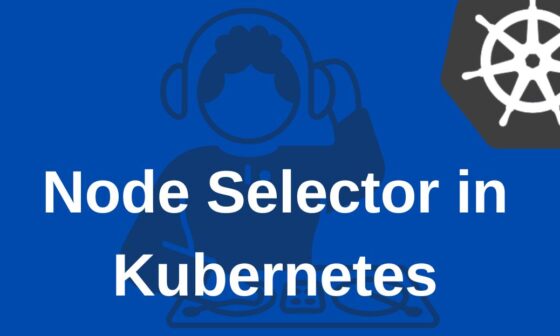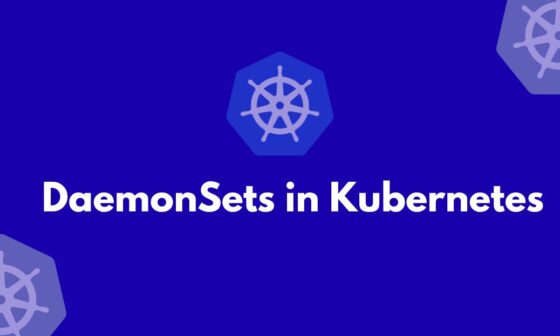The Kube Controller Manager is a critical Kubernetes component that manages and maintains the desired state of various resources within a Kubernetes cluster. It acts as a central orchestrator for several types of controllers, each responsible for specific tasks to ensure the cluster’s health and functionality.

In Kubernetes, the desired state is what you define for the cluster through manifests (YAML/JSON), specifying how resources like Pods, Deployments, and Services should behave. For example, you might define a Deployment with 5 replicas or a Service to expose an application. This desired state represents your intended configuration.
The current state reflects the actual condition of resources in the cluster, such as the number of running Pods, their health, or the status of nodes.
The Kubernetes Controller Manager is responsible for ensuring that the current state matches the desired state. It achieves this through a process called reconciliation. Controllers continuously monitor the current state by communicating with the API server, comparing it to the desired state, and taking corrective actions as needed.
For example, if the desired state specifies 3 replicas but only 1 Pod is running, the ReplicaSet controller creates 2 more Pods. Similarly, if a node fails, the Node controller marks it as NotReady and reschedules Pods elsewhere.
This reconciliation process is continuous and automatic, allowing Kubernetes to self-heal and maintain consistency despite failures or changes, ensuring the system aligns with user-defined specifications at all times.
Kube Controller Manager: The Heart of Kubernetes Resource Management
The Kubernetes Control Plane consists of several key components, one of the most important being the Kube Controller Manager. This single binary houses multiple controllers responsible for monitoring the cluster’s state and making adjustments to ensure it matches the desired configuration defined in the cluster’s declarative API objects.
Core Functionality
The Kube Controller Manager performs reconciliation loops to achieve and maintain the desired state of the cluster. A reconciliation loop is a control loop that continuously checks the actual state of the cluster against the desired state and makes changes to align the two.
Key Responsibilities
The Kube Controller Manager includes several controllers, each with specific roles, such as:
- Node Controller
- Handles node lifecycle events, such as marking a node as unhealthy or removing it from the cluster if it becomes unresponsive.
- Monitors the health of nodes in the cluster.
- Replication Controller
- Ensures the specified number of pod replicas are running for a given replication controller object.
- If a pod fails, the replication controller spawns a new one to maintain the desired replica count.
- Endpoint Controller
- Populates the
Endpointsobject, which keeps track of the pods providing a specific service.
- Populates the
- Service Account and Token Controllers
- Manages the creation of default service accounts and API access tokens for namespaces.
- Namespace Controller
- Handles cleanup of resources when a namespace is deleted.
- Job Controller
- Monitors and ensures the completion of
Jobobjects, which run finite, batch processing tasks.
- Monitors and ensures the completion of
- ResourceQuota Controller
- Enforces resource usage policies in a namespace by monitoring and limiting resource consumption like CPU, memory, or storage.
Architecture
The Kube Controller Manager runs as a single process but logically separates controllers. It communicates with the Kubernetes API server to observe the current state of the cluster and make adjustments as necessary. Key architectural aspects include:
- Leader Election: In high-availability setups, multiple instances of the Kube Controller Manager may run, but only one instance will actively control the cluster resources. Leader election ensures that only one instance is active at any given time, preventing conflicts.
- Modularity: Each controller is a modular component, meaning specific controllers can be enabled or disabled depending on the requirements of the cluster.
Configuring the Kube Controller Manager
The Kube Controller Manager is configured using command-line flags and configuration files. Common configurations include:
--controllers: Specifies the set of controllers to run. For example, you can exclude specific controllers if they are not required.--leader-elect: Enables leader election for high availability.--cloud-provider: Configures integration with a cloud provider for handling cloud-specific resources like load balancers or persistent storage.
Operational Considerations
- Monitoring: The health and performance of the Kube Controller Manager are critical. Metrics and logs from this component can be monitored using tools like Prometheus and Grafana.
- Scaling: While the Kube Controller Manager itself is typically not scaled horizontally (since only one active instance is required), the workloads it manages are dynamically scaled based on resource usage and policies.
- Security: Ensure that the Kube Controller Manager has minimal permissions necessary to perform its tasks. Misconfigured access controls can lead to security risks.
The Kube Controller Manager is indispensable in maintaining the self-healing and scalable nature of Kubernetes. By continuously reconciling the cluster’s actual state with the desired state, it ensures that applications remain resilient, resources are optimized, and workloads are distributed effectively.






